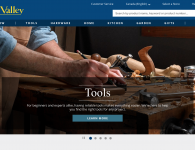
Today’s workplace encompasses four generations — Baby Boomers, Generation X, Millennials and Generation Z, each with their own values and perceptions. This creates a significant challenge for CIOs who strive to create an IT culture where employees of all ages feel fairly treated in their expectations at work and empathize with the other generations.
During difficult times, such as the current COVID-19 pandemic, friction between generations can become more prevalent and visible. Misperceptions about colleagues’ dedication to work are multiplied by natural anxiety in times of distress, leading to a culture of blame when things go wrong. Yet, now more than ever, it is essential for IT leaders and employees of all ages to work together to create a more resilient organization.
In order to achieve true integration and collaboration, it is important to recognize and leverage the different attributes of each generation, rather than attempting to homogenize the workforce. This will help build an IT organization that is inclusive and encouraging for all. CIOs can follow a four-step framework to gradually break the sociological barriers and stereotypes among generations and improve the department’s overall resilience.
 Gartner
GartnerLean on the younger generations’ quest for purpose
Everyone needs a reason to get out of bed each morning, but Millennials and Gen Z exhibit a more explicit need for a sense of purpose, particularly in their work. These generations have a lower tolerance than their Baby Boomer and Gen X counterparts for work that they do not consider meaningful.
read more at https://www.cio.com by Daniel Sanchez-Reina
Cio









